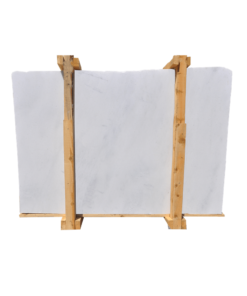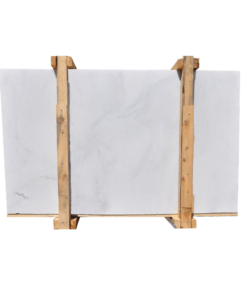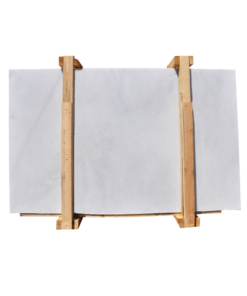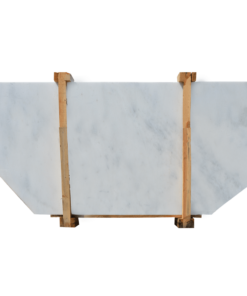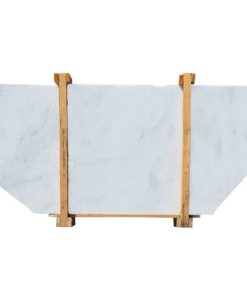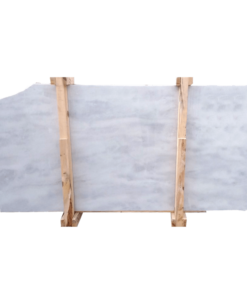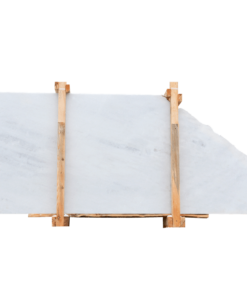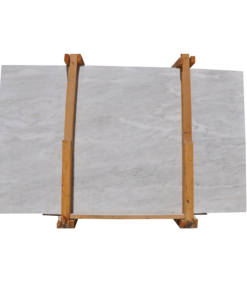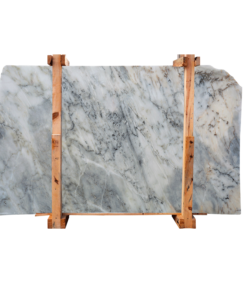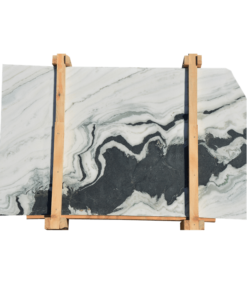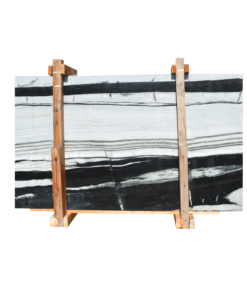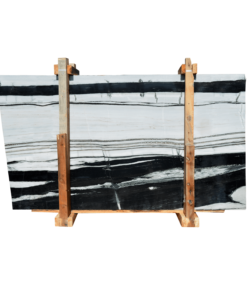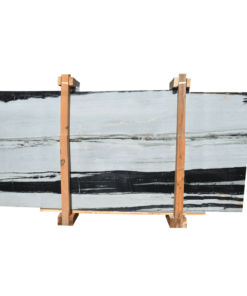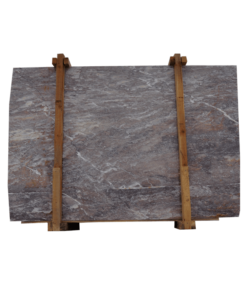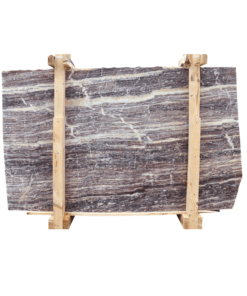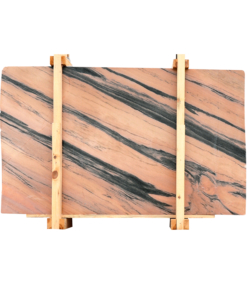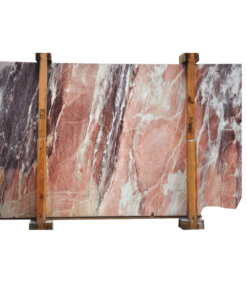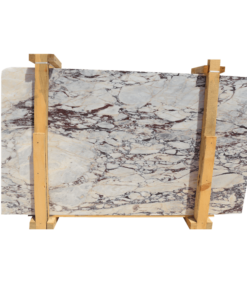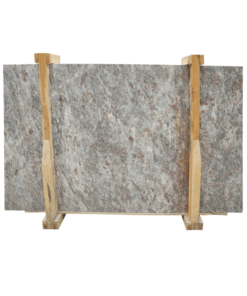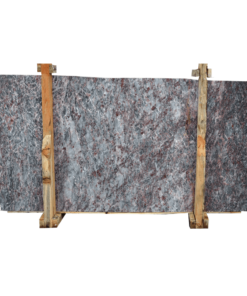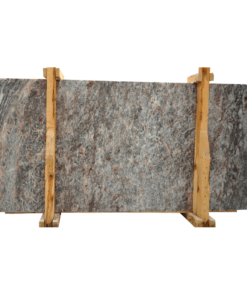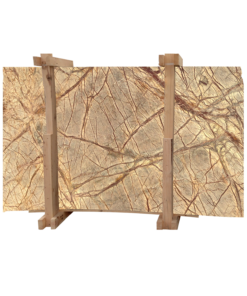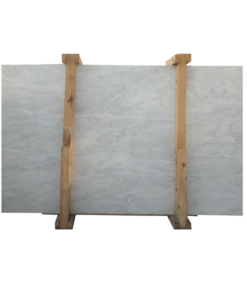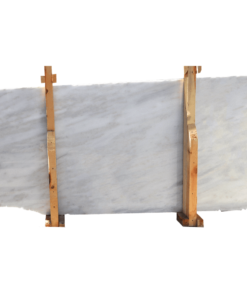Marble slabs and countertops have become synonymous with elegance and sophistication in both residential and commercial spaces, much like the luxurious bianco finishes. Their natural beauty and durability make them a favorite choice for designers and homeowners alike, whether it’s marble tile or quartzite. In this article, we will explore various types of marble slabs, their usage, and design considerations to help you find the perfect fit for your space.
Types of Marble Slabs
Understanding Marble Varieties
Marble slabs are large, flat pieces of marble typically cut into ¾” thick or 1 ¼” thick pieces. Sourced from quarried blocks of marble, they are renowned for their beauty, durability, and versatility. Popular varieties include Carrara, Calacatta, and Statuario, primarily quarried in Italy. Carrara marble features a white or blue-gray hue with soft veining patterns, while Calacatta marble stands out with a bright white background adorned with dramatic gold and gray veins. Statuario marble is highly prized for its striking gray veining against a pure white backdrop, each type of marble offering unique characteristics and applications for various design projects.
Popular Marble Slabs: Carrara and Calacatta
Carrara marble, hailing from Carrara, Italy, is one of the oldest and largest sources of white marble globally, often compared to other luxurious options like Calacatta Viola marble. Its aesthetic appeal makes it highly sought after, commonly used in artistic sculptures and building decor. Calacatta marble, also from Italy, is distinguished by its bright white background and bold veining, making it a luxurious choice for countertop and wall cladding, much like Calacatta Viola marble. Both Carrara and Calacatta marble are favored in high-end residential and commercial projects, adding a touch of elegance that elevates any space's overall design.
Unique Options: Arabescato and Breccia
For those looking for something distinctive, Arabescato marble offers intricate and swirling patterns in shades of gray and white, making it an eye-catching choice. Conversely, Breccia marble is known for its fragmented appearance, showcasing a vibrant mix of colors and textures that range from earthy tones to more vivid hues. These unique options provide creative possibilities for both traditional and contemporary design settings, allowing for artistic expression in the usage of marble slabs.
Marble Slab Usage
Marble slabs are highly recommended for kitchen countertops, bathroom vanities, and wall coverings due to their luminous appearance that brightens any room. With a natural beauty that is seldom found in other materials, they add an aura of elegance. However, care must be taken, as marble is porous and prone to staining and etching, necessitating careful maintenance. Additionally, being softer than other natural stones like granite, marble can be at risk of scratches, so avoiding placing heavy objects or metal items directly on marble surfaces is advisable.
Marble Slabs Design
Known for its iconic veining, marble slabs feature bold natural patterns that enhance any space's aesthetic. For those seeking a clean, monochromatic look, options with minimal veining are also available. The extensive collection of marble countertops includes colors ranging from luminous whites to rich blacks, ensuring that there is a perfect slab to match any design vision. The versatility of marble allows it to be integrated into various design styles, from classic elegance to modern sophistication.
Marble Countertops: A Stylish Choice
Top Choices for Kitchen Countertops
Marble countertop are often favored in kitchens for their timeless beauty and elegance. They are heat resistant, allowing for hot pots and pans to be placed directly on the surface without damage. However, due to their porous nature, they require regular sealing to protect against stains from acidic substances. Popular choices for kitchen countertops include Carrara and Calacatta, which offer both aesthetic appeal and functionality. Careful maintenance is essential to preserve their pristine condition over time.
Elegant Bathroom Countertops
In bathrooms, marble countertops add a luxurious touch and are available in various colors and patterns. They can create a spa-like atmosphere, enhancing the overall design of the space. Marble's natural beauty and elegance make it a popular choice for vanity tops and shower surrounds. However, it's crucial to maintain these surfaces, whether they are marble, quartzite, or tile, by cleaning spills promptly and using pH-neutral cleaners to avoid damage from harsh chemicals.
Integrating Marble into Different Design Styles
Marble's versatility allows it to be seamlessly integrated into various design styles, from traditional to contemporary. Its unique veining and color variations can complement different aesthetics, whether it be a rustic farmhouse kitchen or a sleek modern bathroom. Designers often use marble as a focal point, balancing it with other materials to create harmonious spaces. The luxurious appeal of marble, including varieties like Calacatta and Arabescato Corchia, makes it a preferred choice for high-end designs, ensuring that it remains a timeless element in interior decor.
Polished Stone vs. Honed Marble
Advantages of Polished Marble
Polished marble offers a high-gloss finish that enhances the stone's natural colors and patterns, making it a stunning choice for countertops and decorative elements. The polished surface is more resistant to stains and easier to clean, as it prevents liquids from penetrating the stone. Additionally, the reflective quality of polished marble can brighten spaces and create a sense of luxury. However, it is important to note that polished marble can show scratches and etching more readily than honed finishes.
Benefits of Honed Marble Finishes
Honed marble finishes have a matte appearance that provides a softer, more understated look compared to polished marble. This finish is less prone to showing scratches and etching, making it an excellent choice for high-traffic areas. Additionally, honed marble is less slippery when wet, making it a safer option for bathrooms and kitchens. While it may require more frequent sealing to protect against stains, the durability and practicality of honed marble make it a popular choice among homeowners.
Choosing the Right Finish for Your Space
When selecting the right finish for marble, consider factors such as the intended use of the surface, maintenance preferences, and aesthetic goals. Polished finishes are ideal for spaces where a high-gloss look is desired, while honed finishes are better suited for areas that require durability and slip resistance. Ultimately, the choice between polished and honed marble should align with the overall design vision and functional needs of the space.
Exploring Quartz, Travertine, Dolomite Slabs and Other Alternatives
What is Dolomite Slab and How Does it Compare?
Dolomite is a type of sedimentary rock that is similar to marble but offers distinct characteristics. It is composed primarily of the mineral dolomite and is known for its durability and resistance to acid. While dolomite can be used in similar applications as marble, it tends to be less porous and more resilient, making it a practical alternative for countertops and flooring. The aesthetic appeal of dolomite can also rival that of marble, with unique patterns and colors available, allowing homeowners to achieve elegance without the high maintenance associated with traditional marble slabs.
Travertine Slabs: A Timeless Natural Stone Option
Travertine is another sedimentary rock that has been used for centuries in architectural masterpieces. Known for its naturally porous surface and warm, earthy tones, travertine slabs are a popular choice for both indoor and outdoor applications. Their versatility makes them ideal for flooring, wall cladding, and countertops. Travertine offers a rustic yet sophisticated appeal, with unique vein patterns and textures that enhance any design. While it requires sealing to protect against stains and wear, its timeless beauty and durability make travertine a practical and aesthetic choice for those seeking an alternative to traditional marble or granite slabs.
Other Stone Options: Soapstone, Quartz, and Granite Slabs
In addition to marble and dolomite, several other stone options are available for countertops, including soapstone, quartz, and granite. Soapstone is a softer stone that offers a warm, natural look and is highly resistant to heat and stains, making it ideal for kitchen countertops. Quartz, an engineered stone, combines natural quartz with resin, providing exceptional durability and low maintenance, which is perfect for busy households, similar to the benefits of quartzite. Granite is a hard, natural stone known for its strength and variety of colors and patterns. Each of these materials has its unique benefits, making them viable alternatives to marble.
Considerations When Choosing Alternative Stones
When selecting an alternative to marble, such as quartzite or limestone, consider factors such as durability, maintenance requirements, and aesthetic preferences. While materials like quartz and granite may offer greater resistance to stains and scratches, they may lack the unique beauty and elegance of marble. Additionally, the cost of these alternatives can vary significantly, so it's essential to evaluate your budget and design goals before making a decision. Ultimately, the choice should reflect your lifestyle and the specific needs of your space, ensuring that the selected material complements the overall design while offering practical functionality.
Marble Slabs Maintenance
Daily Care Tips for Marble Countertops
To maintain the beauty of marble countertops, daily care is essential. It is recommended to clean spills promptly to prevent staining, especially from acidic substances like citrus juices and vinegar. Use a soft cloth and a pH-neutral cleaner to wipe down surfaces regularly. Avoid harsh chemicals and abrasive cleaners that can damage the marble. Additionally, placing coasters under drinks and trivets under hot pots can help protect the surface from heat and moisture damage, preserving the natural beauty of your marble and ensuring its longevity.
Long-Term Maintenance Strategies
Long-term maintenance of marble slabs involves periodic resealing to protect against stains and etching. Newly installed marble may require an initial seal shortly after installation, with resealing typically recommended every 6 to 12 months, depending on usage. Regularly testing the seal's effectiveness with the water droplet test can help determine when resealing is necessary. Keeping the marble clean and addressing any stains promptly will contribute to its longevity and appearance, allowing your marble to retain its elegant surface and stunning veining over time.
Dealing with Common Issues: Stains and Scratches
Stains and scratches are common issues with marble countertops, but they can often be managed with proper care. For stubborn stains, a paste made from baking soda and water can be applied to the affected area and left overnight to absorb the stain, especially on surfaces like marble or limestone. To address scratches, polishing compounds specifically designed for marble can help restore the surface. If significant damage occurs, professional restoration services may be required to repair the marble's appearance and maintain its luxurious appeal, ensuring that your marble remains a focal point in your home.
Scheduling an Appointment for Your Marble Needs
Finding Local Stone Suppliers
To purchase marble slabs, consider visiting local stone suppliers or specialty marble fabricators. Local stone yards often have a wide selection of marble slabs in various colors and patterns, allowing you to see the material in person before making a decision. Specialty marble importers may offer rare or exotic varieties, such as Calacatta Viola or Nero, and custom fabrication services. Researching and visiting several suppliers will help you find the best options for your project, ensuring that you’re sure to find the perfect marble or alternative stone for your space.
What to Expect During Your Appointment
During your appointment with a marble supplier, you can expect to discuss your project needs, preferences, and budget. The supplier will guide you through their selection of marble slabs, providing samples and information on the characteristics of different types, including the unique veining of Arabescato or the elegance of Carrara marble. It is also an opportunity to ask about pricing, availability, and any additional services such as fabrication and installation. Taking measurements and discussing design ideas can help ensure you find the perfect tile for your project.
Questions to Ask Your Marble Specialist
When meeting with a marble specialist, it's important to ask specific questions to ensure you make an informed decision. Inquire about the types of marble available, their origins, and any notable characteristics. Ask about the maintenance requirements for different finishes, such as polished versus honed marble, and the recommended sealing frequency for surfaces like artistic tile and limestone. Additionally, clarify the pricing structure, including costs for fabrication and installation. Understanding the warranty and return policies is also crucial for a satisfactory purchase experience, ensuring that you are well-informed about your investment in high-quality marble.

 Türkçe
Türkçe Deutsch
Deutsch العربية
العربية Français
Français Español
Español